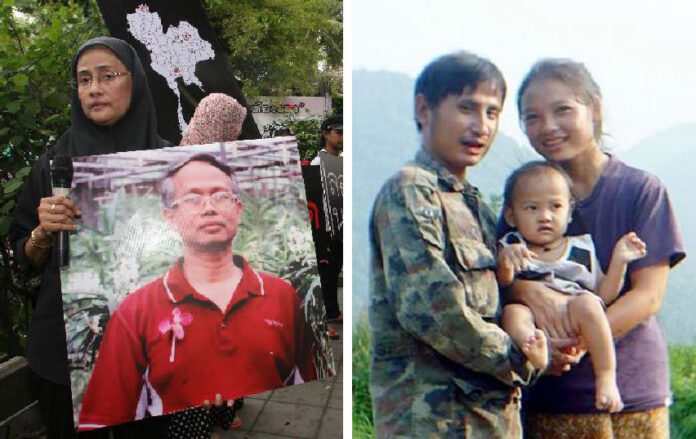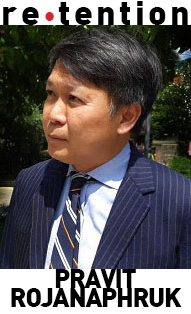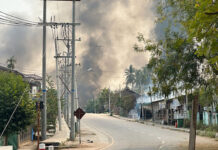

Not being well-versed in murder techniques, I asked one question twice to the chief of the Department of Special Investigation on Tuesday during the press conference announcing the discovery of skull fragments belonging to the missing activist Porlajee “Billy” Rakchongcharoen.
What is the significance of the two metal rods found inside the charred 200-liter oil drum where Billy’s burnt bones were found?
Both times, the chief neglected to respond.
Just hours later, former National Human Rights Commissioner and this year’s Ramon Magsaysay awardee Angkhana Neelapaijit posted on her Facebook suggesting that the two metal rods must have been used to keep the lid of the drum in place while the body of the 30-year-old Karen activist was being burned.
It’s unclear whether Billy was killed before being burned or burned alive. He was last seen being detained by the then Kaeng Krachan National Park chief Chaiwat Limlikhit-aksorn for allegedly harvesting wild honey.
Angkhana said some high-ranking officials have told her that her husband, human rights lawyer Somchai Neelapaijit, was killed and burned inside a similar oil drum by authorities. Somchai championed the rights of Thai-Malay Muslims in the deep south but was abducted and killed in 2004 during the Thaksin Shinawatra administration. His body was never found and no one has been punished.
Four-and-a-half decades ago during the Cold War, burning enemies of the state inside red oil drums, whether alive or dead, was in vogue among some Thai officers. There is even a monument marking the widespread “red drum” (thang daeng) killings in Phatthalung province. Estimates of the number of red drum killings committed during the Cold War range from hundreds to as many as three thousand. People accused of being enemies of the Thai state simply disappeared, or their remains were discovered in such oil drums.
Fast forward to 2019, the United Nations says there have been 86 outstanding cases of enforced disappearance in Thailand since 1980. You would think there is a law criminalizing enforced disappearance in Thailand. Wrong. No domestic law criminalizes abduction to kill.
Why is the Thai state so reluctant to enact a law which recognizes the heinous crime for what it is? According to Angkhana, the junta-appointed parliament under the last junta mulled such a bill for three years, and eventually failed to enact it before elections in March this year – despite its record of quickly giving a rubber stamp to other laws.
Is it because it’s the state itself who is the biggest perpetrators of abductions and torture? Is it because every now and then the state needs to silence, kill and even burn some of its critics and opponents?
Billy was fighting for the rights of the Karen people to live in disputed parts of the national park before he disappeared. Rights lawyer Somchai was fighting for the rights of Thai-Malay Muslims to have a political say prior to his disappearance.
While the Department of Special Investigation should be commended for discovering Billy’s burnt bone fragments, justice has yet to be served. Distrust runs deep and not all were convinced.
Yaowalak Anuphan, head of Thai Lawyers for Human Rights, posted on her Facebook soon after the DSI press conference speculating that the emergence of Billy’s remains may have more to do with Thailand’s on-going attempt to register Kaeng Krachan National Park as a UNESCO World Heritage site. UNESCO rejected the bid earlier this year, listing the concerns of the Karen community inside the park as an issue that has to be addressed for the body to reconsider the listing again.
I truly hope that was not the real drive to solve Billy’s enforced disappearance.











































